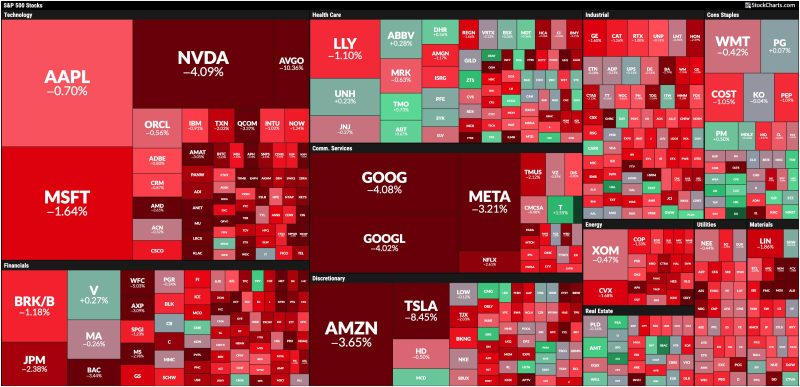Broad-Based Stock Market Selloff: How to Position Your Portfolio
Market selloffs can often strike fear into the hearts of investors, causing panic and irrational decisions. However, it’s crucial to remember that downturns are a normal part of the market cycle and present opportunities for savvy investors. The recent broad-based stock market selloff serves as a reminder of the importance of having a well-positioned portfolio to weather such storms.
Diversification is Key
One of the most vital strategies for protecting your portfolio during a selloff is diversification. By spreading your investments across different asset classes, industries, and geographies, you can reduce the impact of any single market downturn on your overall portfolio. Diversification helps you hedge against risk and minimize losses when a particular sector or asset class experiences a downturn.
Review and Rebalance Your Portfolio
During a market selloff, it’s essential to review your portfolio holdings and rebalance as needed. This involves selling overvalued assets and buying undervalued assets to realign your portfolio with your investment objectives and risk tolerance. Rebalancing allows you to trim positions that have become too large relative to your other holdings and reinvest the proceeds in areas that offer greater potential for returns.
Focus on Quality
In times of market volatility, it’s crucial to focus on quality rather than chasing speculative investments. Look for companies with strong fundamentals, stable earnings, and a history of dividend payments. These are the companies that are likely to weather market downturns more effectively and deliver long-term value to investors. It’s also important to pay attention to the balance sheet strength and cash flow of the companies in which you invest, as these factors can provide a buffer during challenging market conditions.
Stay the Course
While market selloffs can be unsettling, it’s crucial to stay focused on your long-term investment goals and not make impulsive decisions based on short-term market movements. Remember that market downturns are temporary, and historically, markets have always recovered and continued to grow over the long term. By staying the course and avoiding emotional reactions to market volatility, you can position yourself for long-term success as an investor.
Seek Professional Advice
If you’re unsure about how to position your portfolio during a market selloff, consider seeking advice from a professional financial advisor. An experienced advisor can help you navigate market volatility, identify opportunities for portfolio optimization, and develop a strategy that aligns with your financial goals and risk tolerance. A trusted advisor can provide valuable insights and guidance to help you make informed investment decisions during challenging market conditions.
In conclusion, market selloffs are a natural part of the investing landscape, and being prepared is key to successfully navigating these periods of volatility. By focusing on diversification, reviewing and rebalancing your portfolio, emphasizing quality investments, staying the course, and seeking professional advice when needed, you can position your portfolio to weather market downturns and emerge stronger in the long run.

